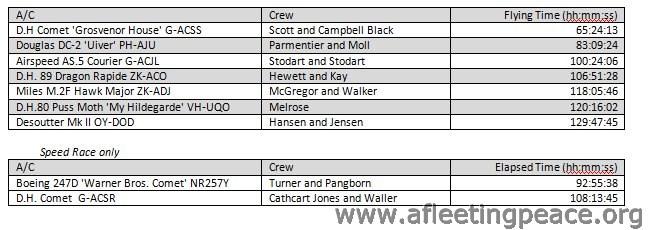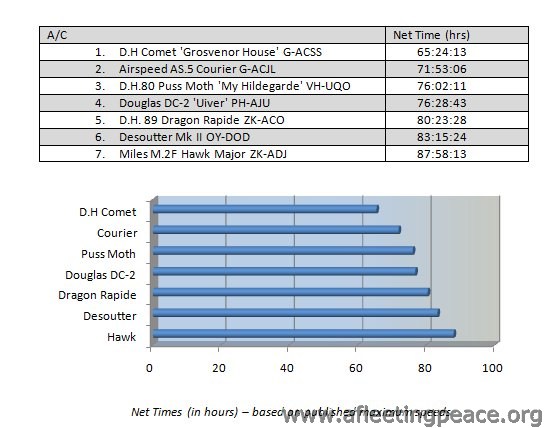Let me explain:
Nine aircraft completed the course in the allowed time, seven of which had been entered for the Handicap Section:
There were five prizes to be awarded at the end of the race:
Speed Race
- First Prize - £10,000 and the MacRobertson Trophy (which went to Scott and Campbell Black)
- Second - £1,500 (Turner and Pangborn in the Boeing 247)
- Third - £500 (Cathcart Jones and Waller)
Handicap Race
- First Prize - £2,000 (Parmentier and Moll, DC-2)
- Second - £1,000 (Jimmy Melrose, Puss Moth)
The prizes for the Speed Race were simply based on the elapsed time taken to reach Melbourne from Mildenhall; here, Scott and Campbell Black’s Comet was the clear winner.
The prizes for the Handicap Race, however, were awarded based on how well each aircraft did against its ‘handicap speed’, which was worked out by using a formula:
[Handicap Speed = 140 (1-(0.2L/(W-L))) (P/A)1/3
where L is the payload, W the all-up weight, P the rated power of the engines, and A the wing area.]
The formula was an attempt (presumably because no time was available to establish the actual speeds) of how fast each aeroplane should be able to fly, so that a handicap time could be applied to the actual flying time to give a ‘net’ time.
There are two problems with this:
1 - In two important cases, they worked it out wrong, but in any case
2 - The formula doesn't work, and they should have used real numbers
Which, together, mean that the wrong people got the (not inconsiderable) prizes. Settle down while I expand...
1 - They worked out the handicaps wrong
This is really interesting, if you like numbers and stuff:
When they worked out the handicap speeds for the aeroplanes, they got 3 of them wrong.
You see, the formula they used gives a 'handicap speed' based on the four parameters W, A, L and P.
In fact, Handicap Speed =140*(1-(0.2*L)/(W-L))*((P/A)^(1/3)), where
W is the weight of the aeroplane, in pounds;
A is the Wing Area, in sq ft;
L is the Payload, in pounds - each crew member was reckoned to be about 200lb, but some of the aeroplanes carried other passengers and/or freight, and
P is the rated Power of the engine(s) at sea level, in horsepower.
Now, because I don't have the original calculations (they are presumably somewhere in the Royal Aero Club's Archives, if they still exist), I don't know what the figures for the actual weight of each aircraft and its actual payload were on the day. But I do know the figures for P and A, because the figures for the engine h.p. and the wing area are freely available.
So I set up a spreadsheet to try different (but realistic) values of the weight and the payload, to see if I could derive the same result as they did in 1934.
1 - The Desoutter
The Desoutter has a maximum take-off weight of 1900lb, its engine is 120h.p., and it has a wing area of 183 sq. ft. Using a value of 470 lb for the payload (2 people, plus a bit), it has no problem coming in at the 'right' figure of 113 mph:
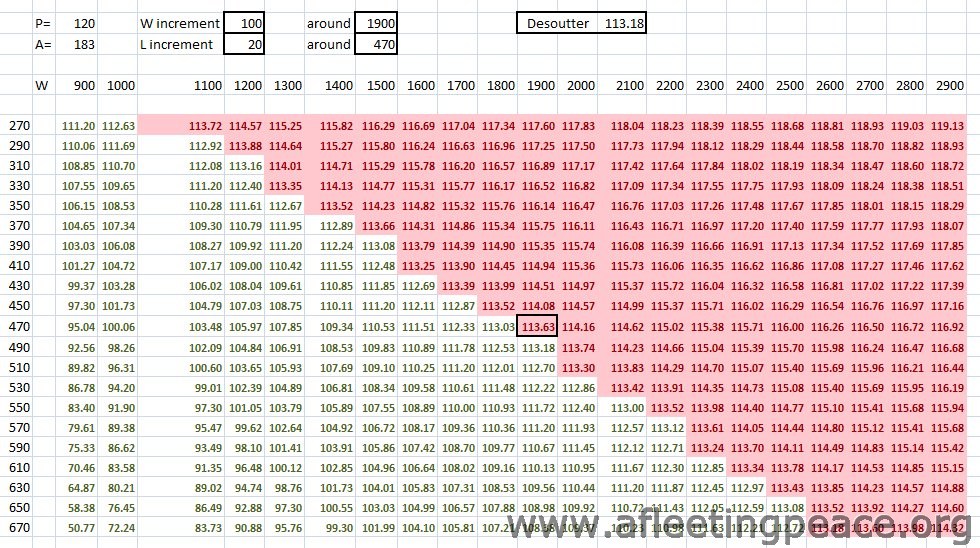
and neither does 2 - The Puss Moth
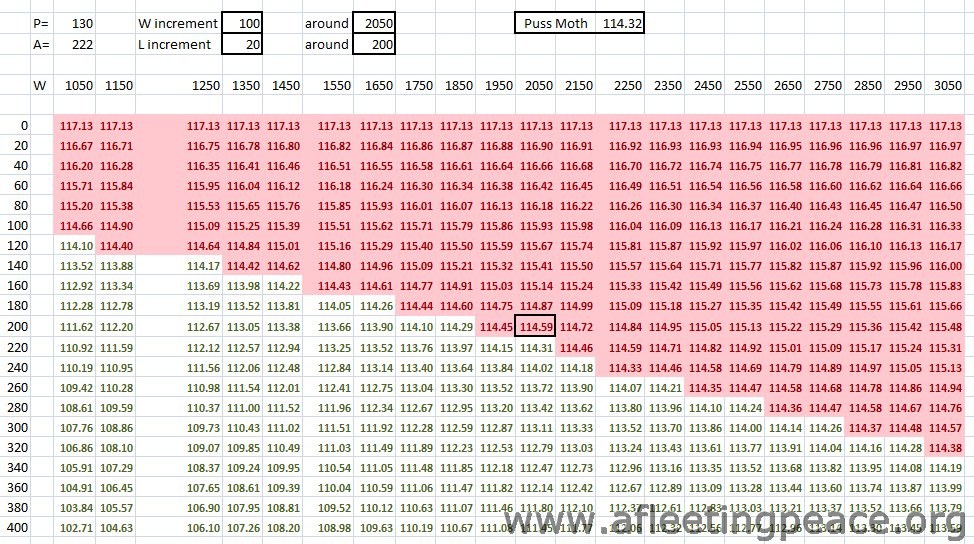
... and so on, through 3 - the Klemm
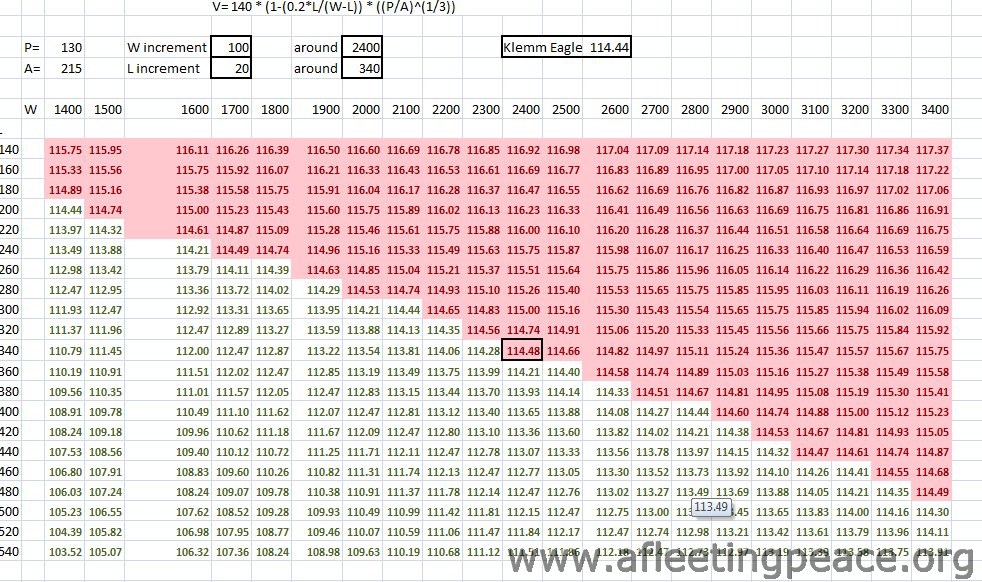
4 - The Miles Falcon:

5 - The Hawk:

and 6 - the Dragon Rapide (although the payload seems a bit high):
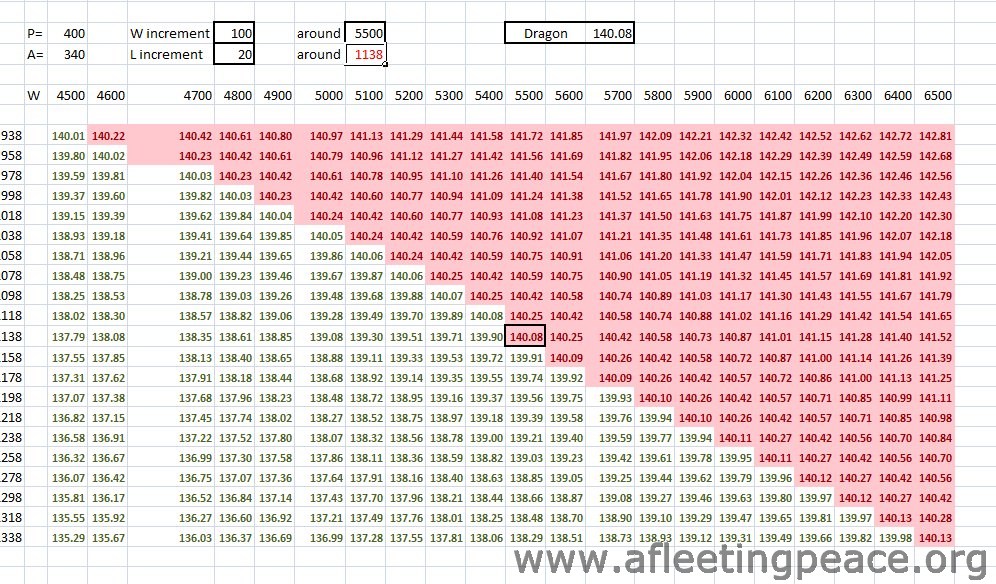
(Still with me?)
However, the chart for 7 - the Courier comes out funny:
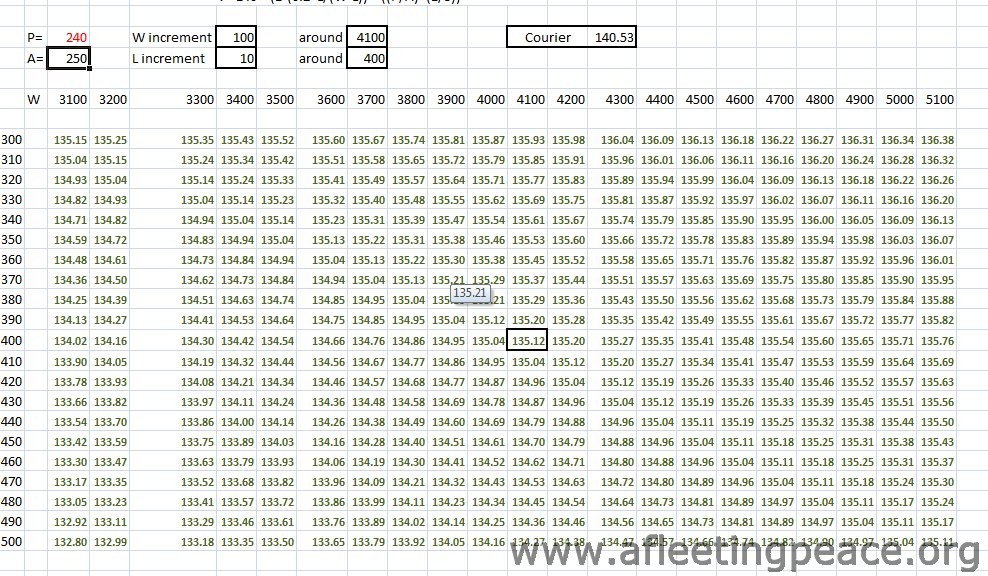
This means...
There are no possible values for the weight of the aircraft, and the payload it carried, which would give us 140.53 m.p.h. as the Handicap Speed.
What can possibly have happened?
I think the answer is quite simple, actually - if you plug in 270h.p. as the power of the engine, hey presto:
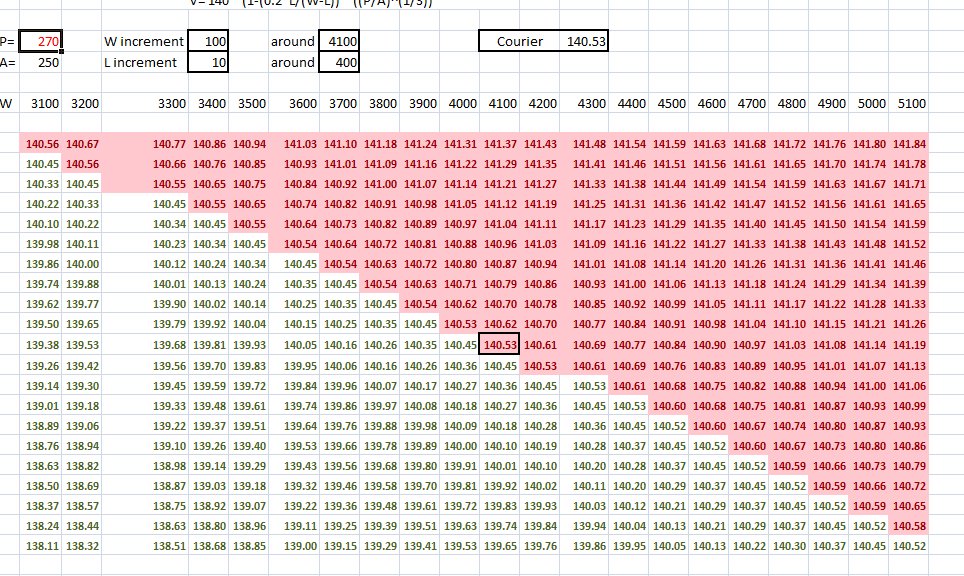
Now, if you remember your Airspeed Courier facts, there were two versions. One (the version the Stodarts intended to fly, and registered for the race) had a 270hp Cheetah engine. The other (the version they actually flew) had a 240hp engine.
... their handicap speed should have been about 135mph, not 140mph.
Better check out the rest of them, I suppose:
8 - the Fox looks OK:

9 - The Comet is OK, too (that's a relief):

and so is 10 - the Fairey IIIF:
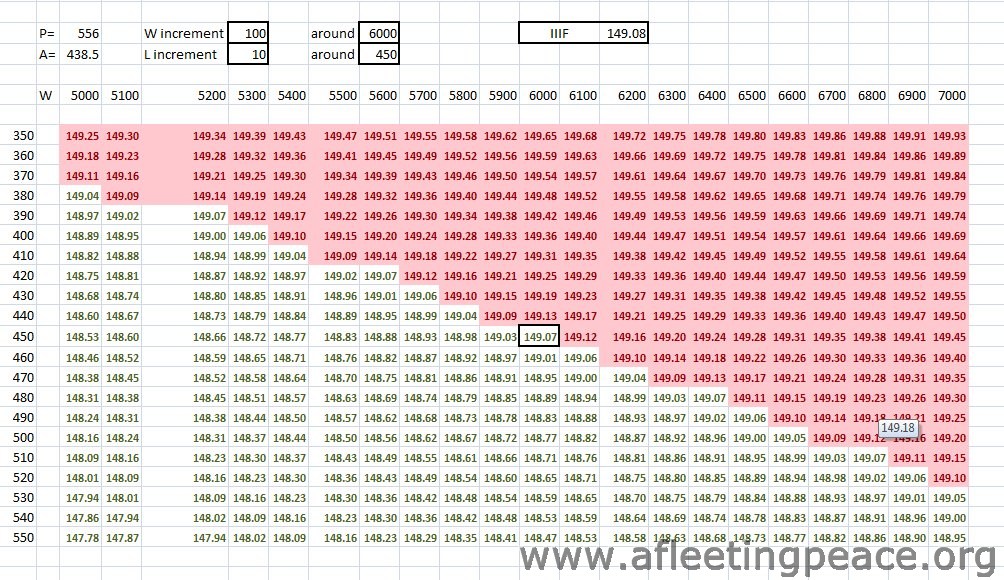
and even 11 - The Lambert Monocoupe squeezes in (wing area looks a bit suspect, but...)
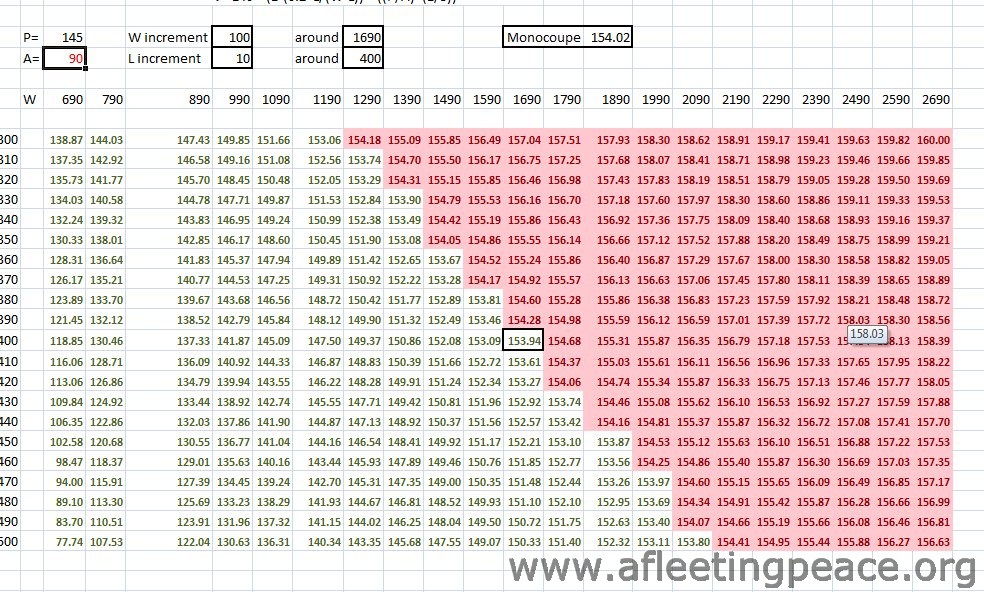
but what have we here... 12 - the DC-2 is wrong, as well:
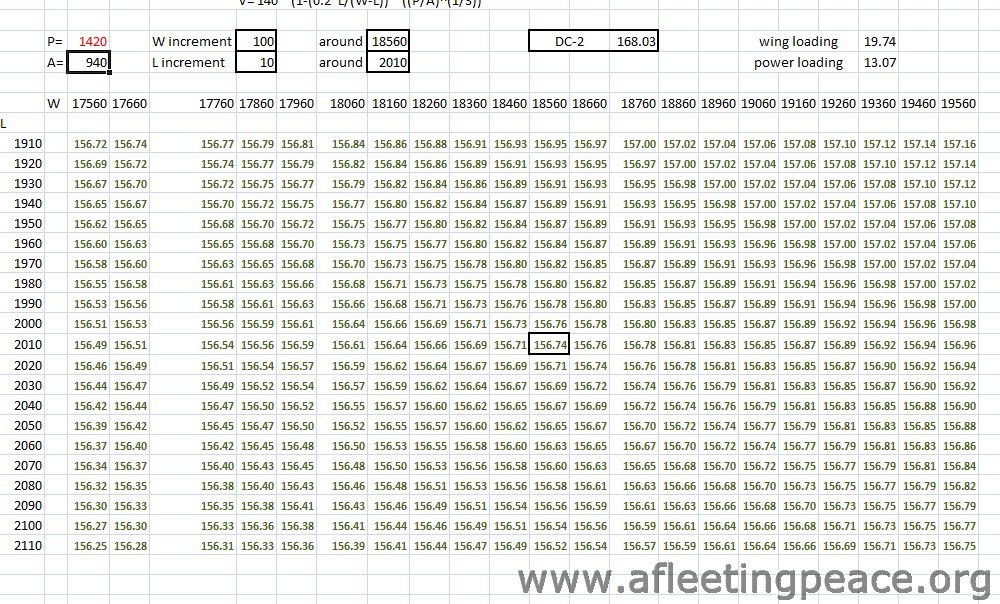
Working back from the result, they must have assumed the DC-2 would have a total of 1750 hp (which it certainly didn't):
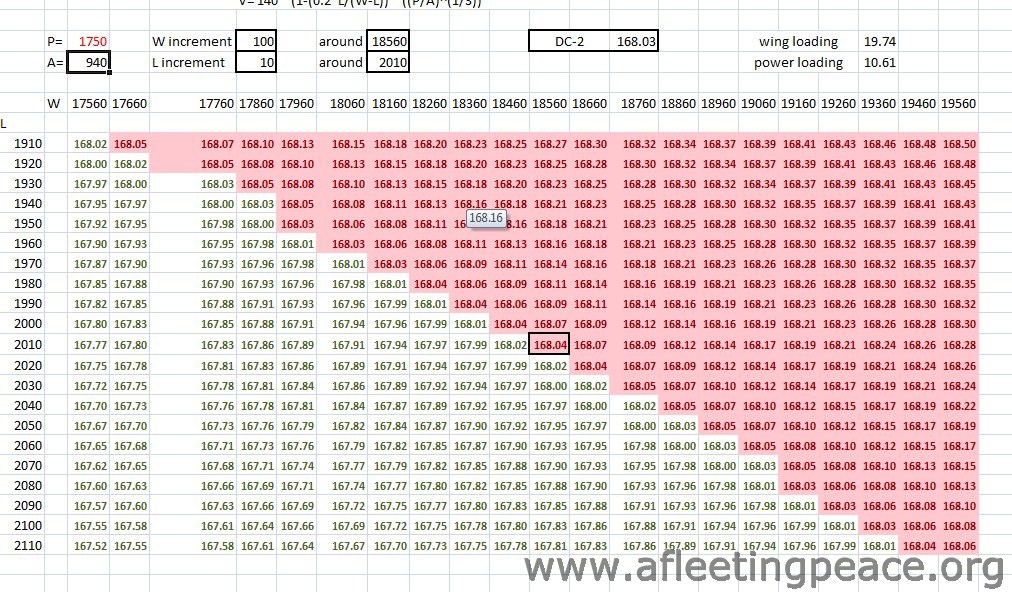
... the DC-2 should have had a handicap speed of about 159mph, not 168mph.
Nearly there, thank goodness...
13 - the Vega looks fine:
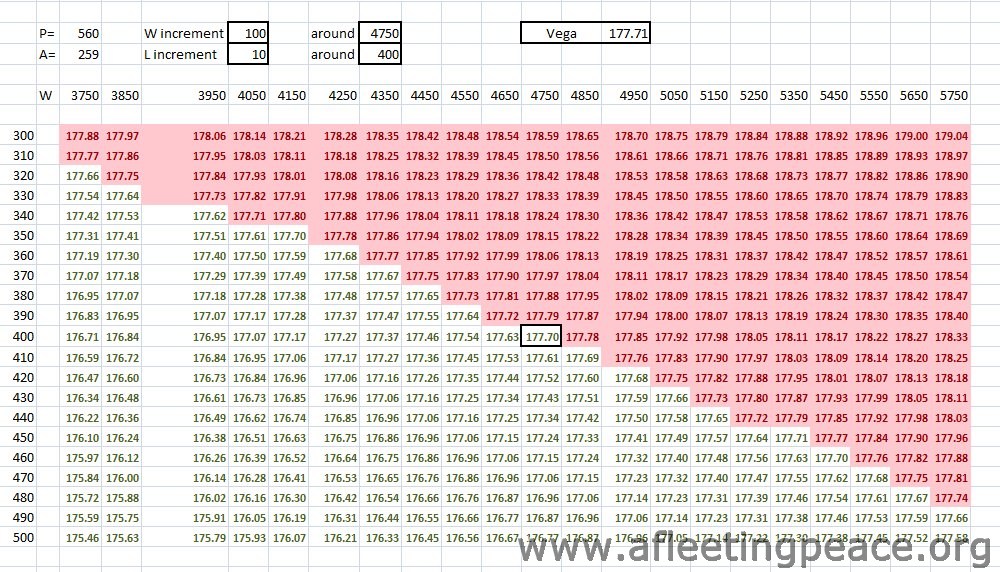
but poor old 14 - the Airspeed Viceroy was hard done by, too:
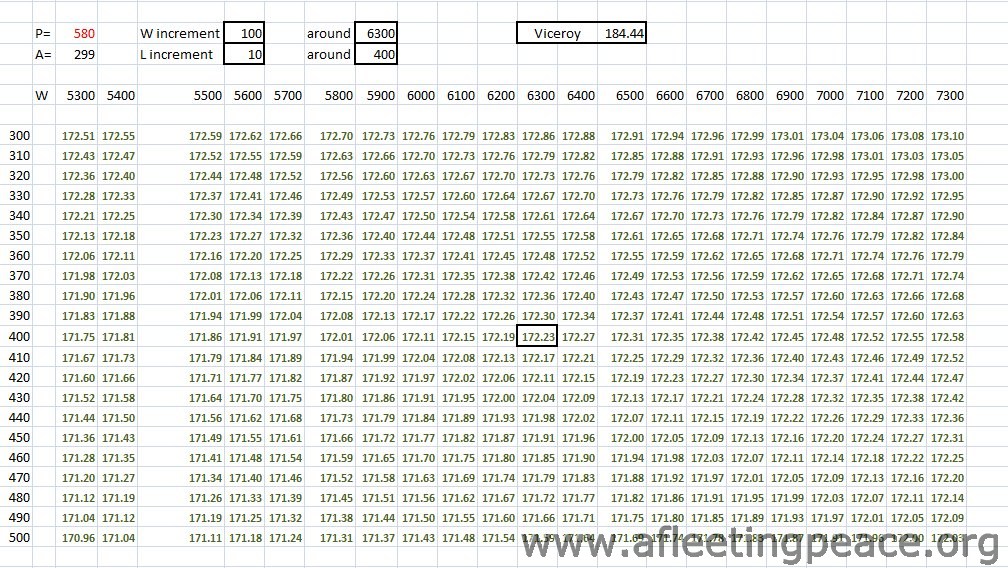
They must have assumed it would have 712hp:
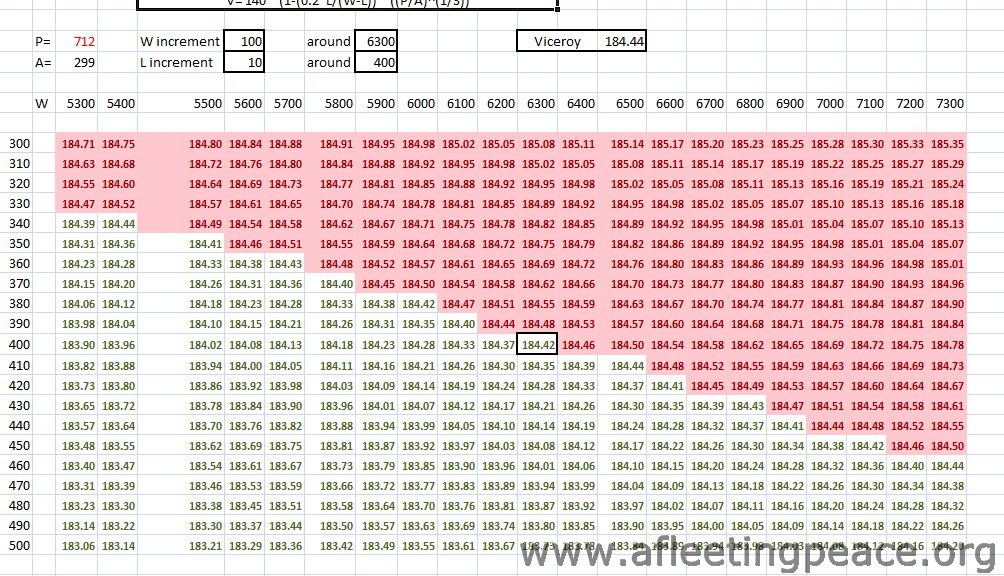
Oh well... it didn't finish anyway. :-)
All of which means that...
The Courier, instead of a handicap time of 87:36:59, should have had 91:14:52.
The DC-2 should have had 77:01:34 rather than 73:16:56
The Courier spent 100:24:06 hrs completing the race - 9:09:14 hrs more than its proper handicap time.
The DC-2 only took 83:09:24hrs - 5:52:28 hrs more than its real handicap time.
However, Jimmy Melrose (who got the second prize originally), took 120:16:02, which was 12:34:19 over his handicap time.
So, actually, after all that, if they'd done the arithmetic properly, the Stodarts should have had the runners-up prize, instead of Jimmy (despite what Kenneth said after the race about it being a 'pity to do him out of the second prize'!)
2 - It gets worse - they used the wrong speeds anyway
Unfortunately, the results of the formula turned out to be a rather poor predictor of the maximum speeds of the aircraft involved. The comparative figures for the seven finishers in the handicap section are shown below:
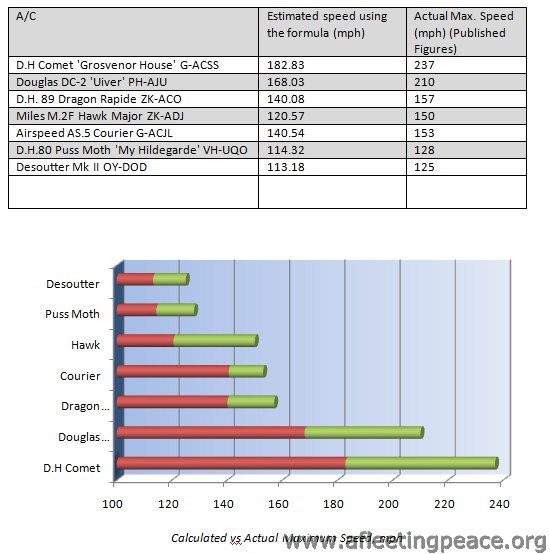
Flight (October 25th, 1934) noted that
“No one has yet succeeded in evolving a formula which is fair to all types of aeroplane for purposes of handicapping, and the formula used in the England-Australia race is no exception.”
“It is, perhaps, doubtful if any other machine in the race ‘beats’ the formula by such a wide margin as that of the ‘Comets’ (about 50 m.p.h.) But it is worth remembering, in this connection, that the ‘Comets’ were specially designed for the race, and were, in fact, the only machines to have this distinction. To achieve a speed of more than 230 m.p.h. when carrying two people and enough fuel for a flight of 2,500 miles (with a fair margin for head winds) with engines totalling but 460 h.p. is a performance which no formula based upon average values could be expected to cope with.”
Before the race began, more doubts were being expressed about the reliability of the formula:
“The handicaps have just been announced and as [Stack in the Airspeed Viceroy] is scratch man in the handicap race and is set to give a start to several machines which are known to be faster, it appears that [his] luck is out”
“...the poor old Fairey IIIF which has been handicapped to do a speed of nearly 150mph, at least 20mph more than it can hope to accomplish...”
Alan Goodfellow, Clerk of the Course
Using the handicap speeds derived from the formula, the final results for the Handicap Section were:
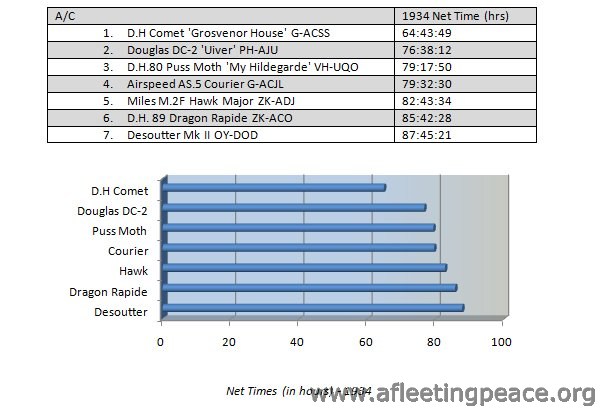
Under the Race Rules, the Comet had to choose between the speed prize and the handicap prize and not surprisingly chose the former. The DC-2 was declared the winner of the handicap section, with Jimmy Melrose in the Puss Moth in second place.
However, if they had used the published maximum speeds quoted above to establish the net time, the results would have looked rather different:
All of which leads to these conclusions:
1 - Scott and Campbell Black still win. Congratulations to them.
2 - The DC-2, instead of winning the Handicap Section, should have gone for second prize in the Speed Section.
3 - The inadequacies of the handicappers’ formula robbed the Stodarts of their place on the winners’ podium!
Of course, those maximum speeds cannot now be corroborated exactly; the way to remove any doubt would have been (as is done for modern race handicapping) to run a series of check flights under controlled conditions to determine the actual speed. In addition, a difference of a few m.p.h. here or there would make a significant difference to the end result.
The Stodarts lodged a protest but this was to do with inaccurate checking times, and was not upheld.
“When told that the protest had been dismissed, Mr. [Kenneth] Stodart did not appear to be particularly surprised. He said that the independent stewards appointed to adjudicate had nothing tangible to work on, and had had to rely on the times given by officials at overseas aerodromes. 'And Melrose is a splendid fellow,' Mr. Stodart added. 'It would have been a pity to do him out of second place.' “
The West Australian, 22 November
All of which means that my totally unofficial results are:
Speed Race
- First Prize - £10,000 and the MacRobertson Trophy (Scott and Campbell Black)
- Second - £1,500 (Parmentier and Moll, DC-2)
- Third - £500 (Turner and Pangborn, Boeing 247)
Handicap Race
- First Prize - £2,000 (David and Kenneth Stodart, Airspeed Courier)
- Second - £1,000 (Jimmy Melrose, Puss Moth)
Sorry, Cathcart Jones and Waller...
